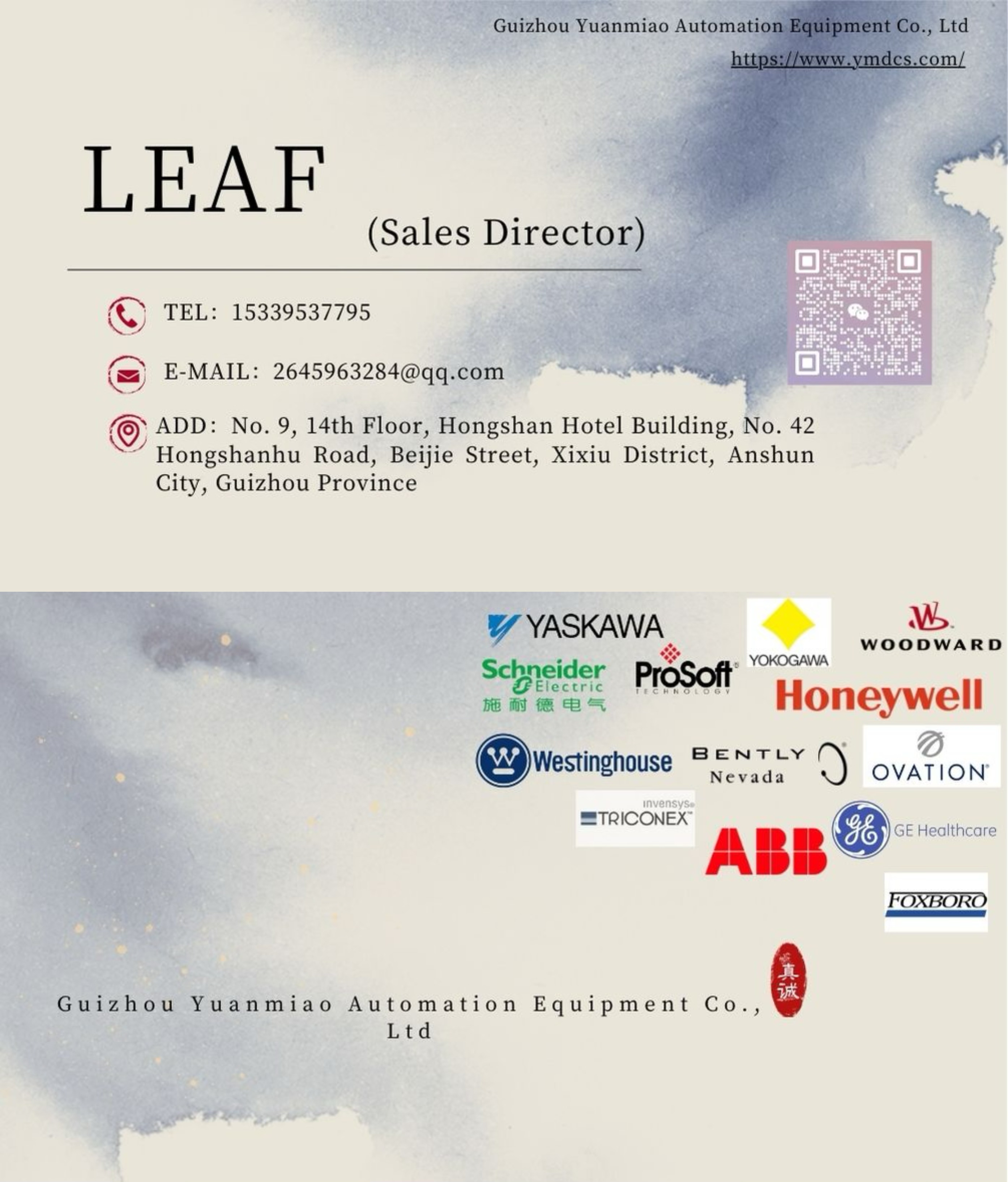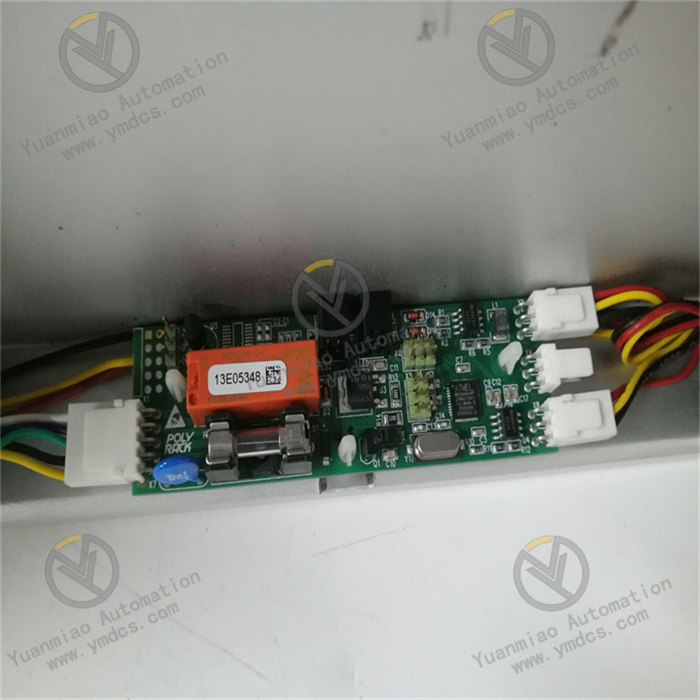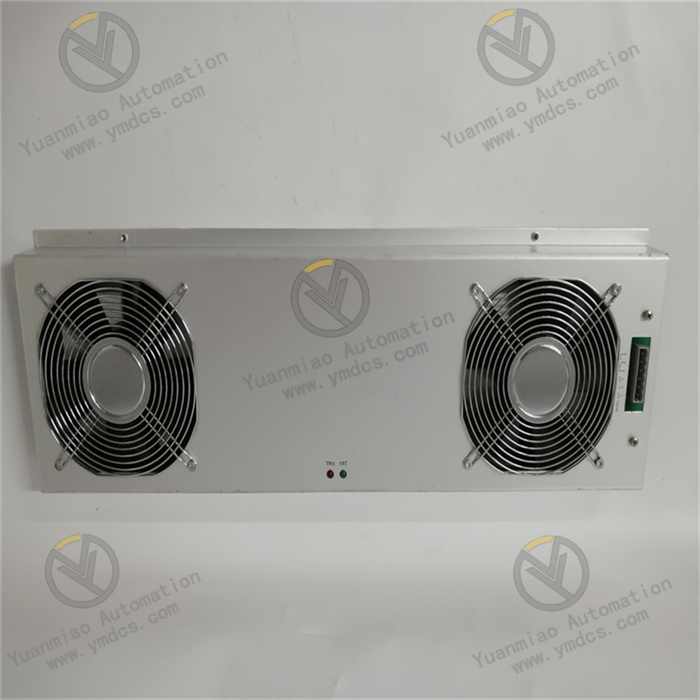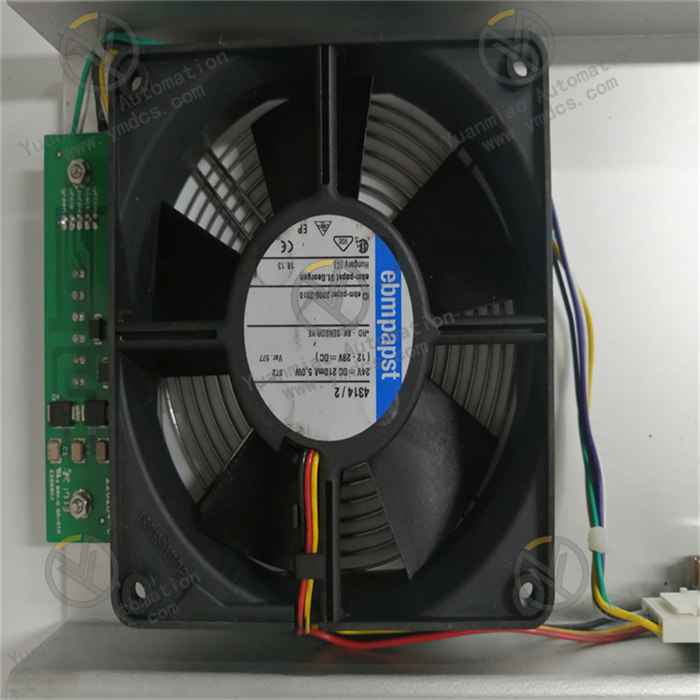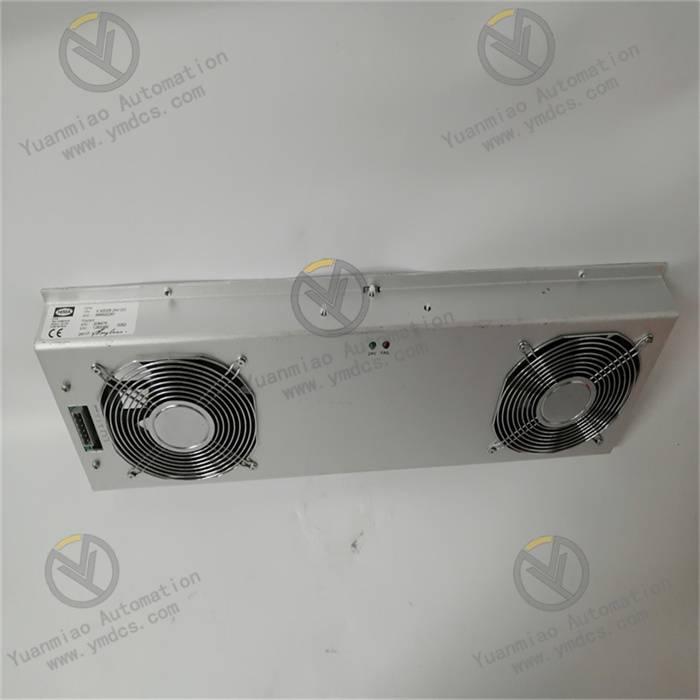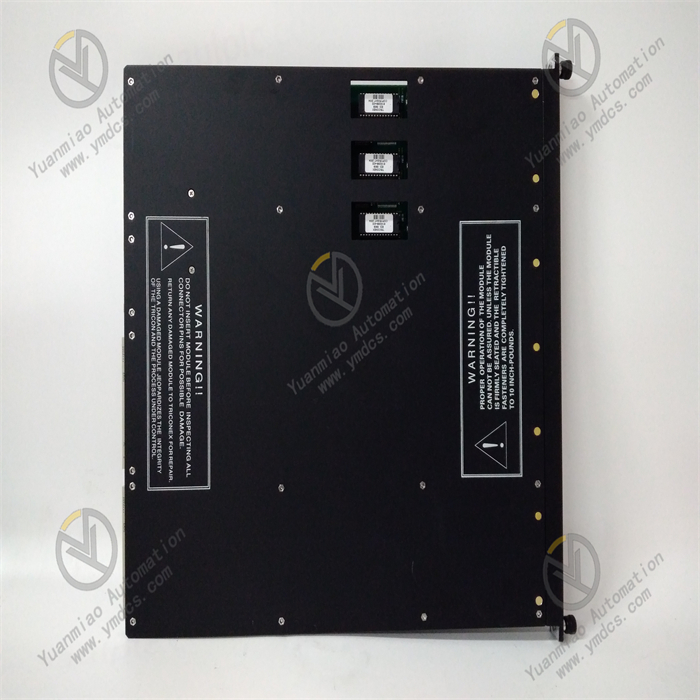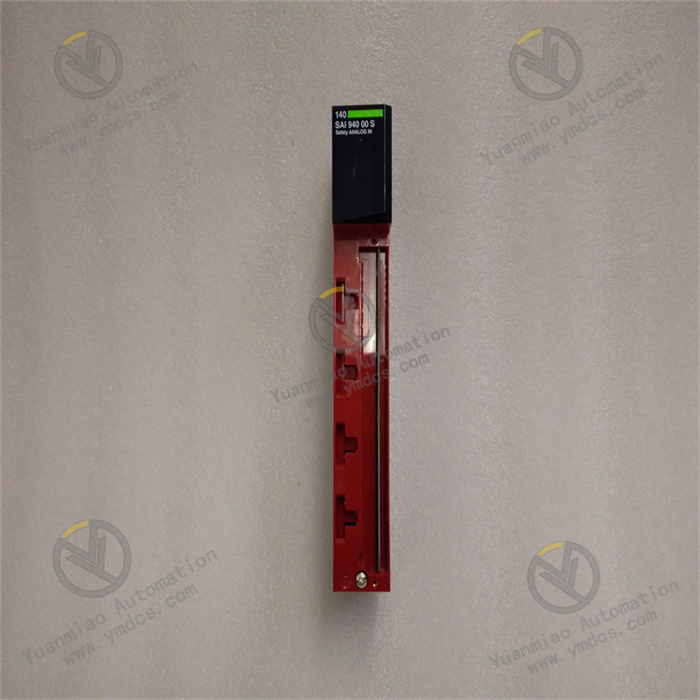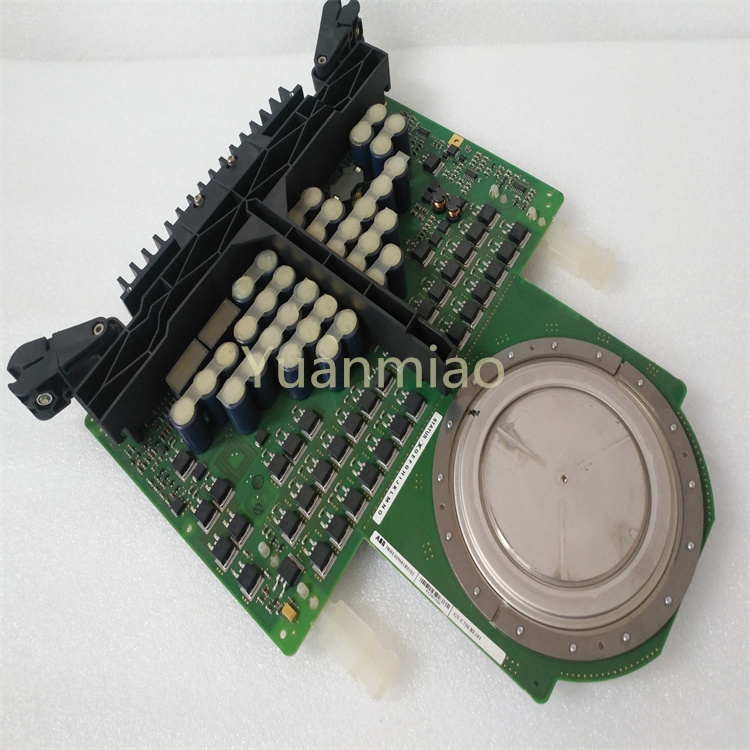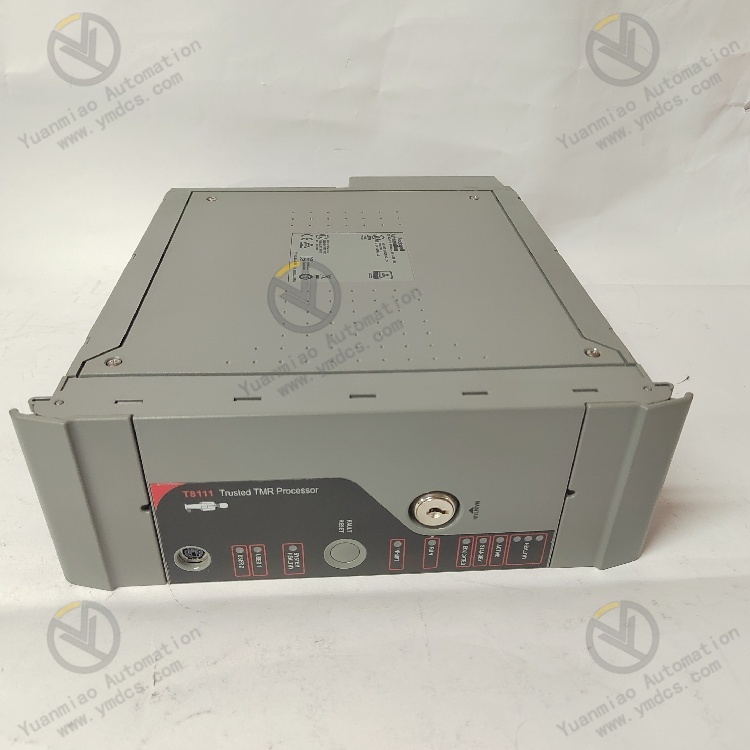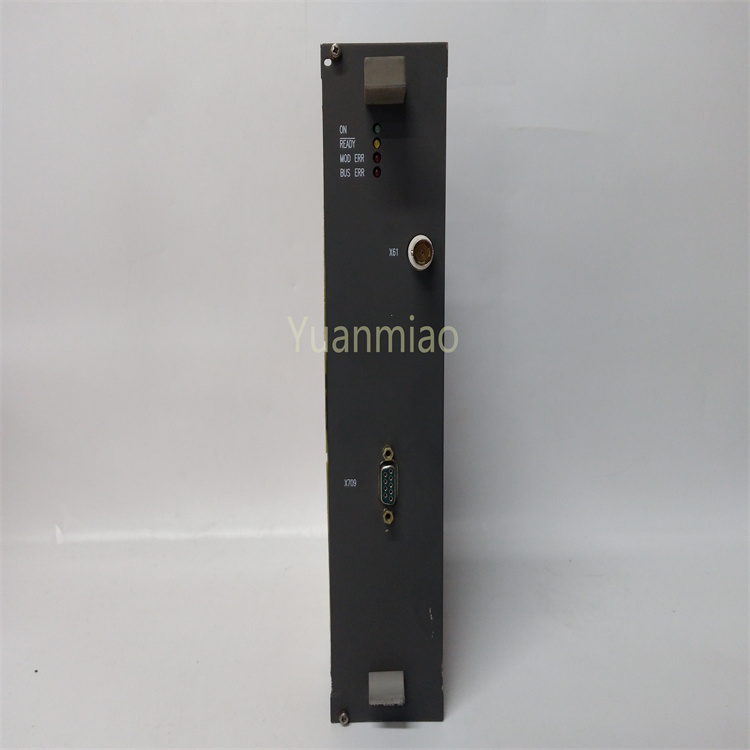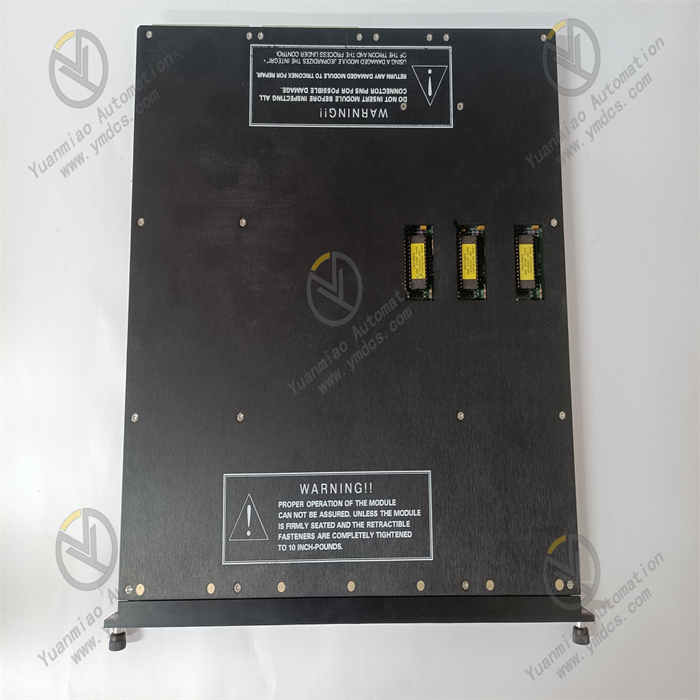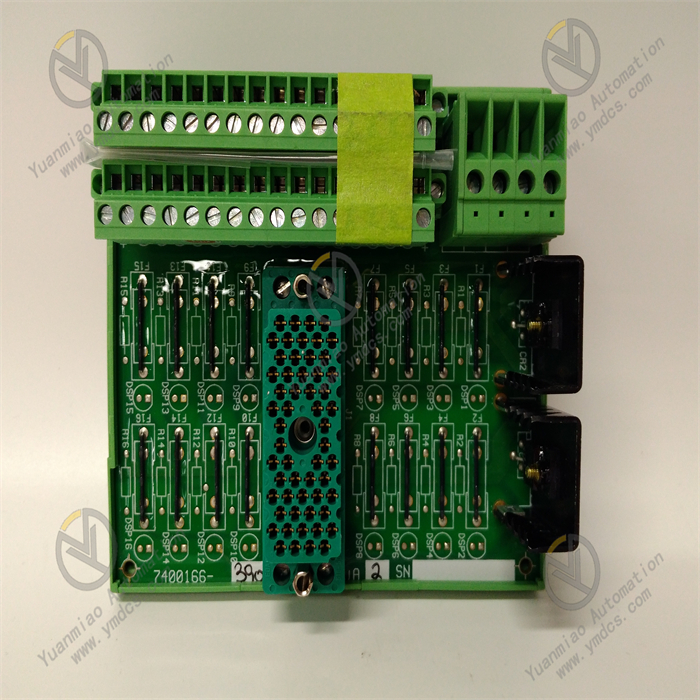Description
The HIMA K9202B 996920261 is a top-mounted fan module for electrical cabinets, mainly used to provide cooling and ventilation functions for industrial control cabinets or chassis, ensuring that electronic devices operate in a suitable temperature environment. Technical Parameters: Electrical Parameters Rated Voltage: 24V DC Maximum Rated Current: 500mA Performance Parameters Air Volume: 200m³/h Rotational Speed: 2800min⁻¹ Sound Pressure Level: Approximately 50dB (A) Service Life: 62500 hours in an environment of 40℃ Environmental Parameters Operating Temperature: -20℃ to 70℃ Physical Parameters Dimensions: 48cm×16.5cm×4cm Weight: 1.05kg
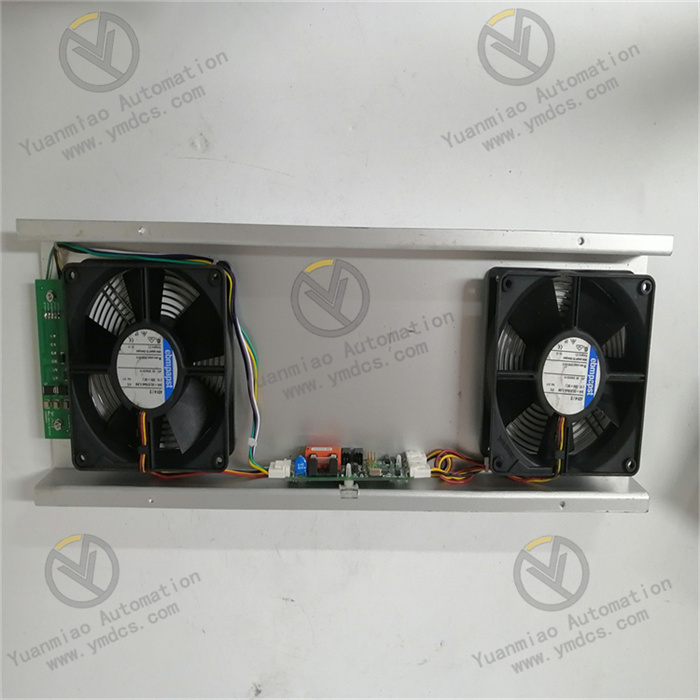
Installation Steps: Preparation Work: Confirm that there is enough space at the installation location and there are no obstacles around that will affect the installation and operation of the fan. Prepare the tools required for installation, such as a screwdriver. At the same time, ensure that the installer is familiar with the safety operation procedures to avoid accidents during the installation process. Determine the Installation Location: Usually, install the fan on the top of the electrical cabinet, which is conducive to the direct discharge of hot air from the cabinet. Select a flat and stable location to ensure that the fan will not loosen due to vibration or other reasons after installation. Fix the Fan: According to the installation holes of the fan, use the supporting screws or clamps to fix the fan on the top of the electrical cabinet. If the fan comes with an installation bracket, install the bracket on the cabinet first, and then fix the fan on the bracket to ensure firm fixation and prevent the fan from shaking or making noise during operation. Connect the Power Supply: Connect the appropriate DC power supply according to the power requirements of the fan. The HIMA K9202B usually uses a 24V DC power supply. Connect the positive and negative poles of the power supply to the corresponding terminal blocks of the fan, and pay attention not to reverse the polarity of the power supply to avoid damaging the fan. Electrical Connection Inspection: Before turning on the power supply, carefully check whether all electrical connections are correct and firm to ensure there are no loose or short-circuit situations. Tools such as a multimeter can be used for inspection to ensure safety. Test Operation: After completing the installation and electrical connection inspection, turn on the power supply and observe whether the fan operates normally. Check whether the rotation direction of the fan is correct and whether there are abnormal noises or vibrations. At the same time, check whether the air volume of the fan is normal and whether it can effectively provide ventilation and heat dissipation for the electrical cabinet.
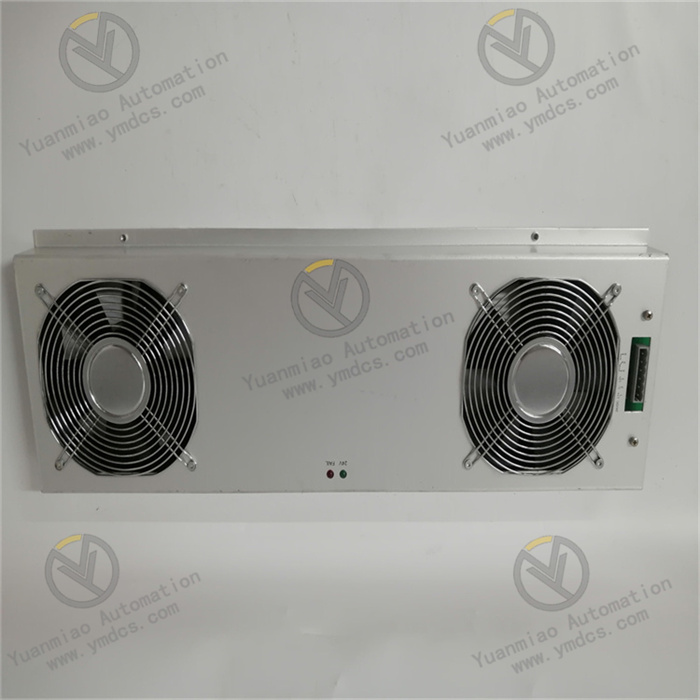
Common Faults and Solutions of the HIMA K9202B 996920261 Fan Module: Fan Does Not Rotate Power Supply Problem: Check whether the power supply is normal, and whether the power connection line is loose, damaged, or poorly connected. A multimeter can be used to measure the output voltage of the power supply to see if it meets the working voltage requirements of the fan module (usually 24V DC). If the voltage is abnormal, check the power supply equipment or replace the power supply; if there is a problem with the connection line, reconnect or replace the connection line. Fan Motor Fault: If the power supply is normal, the fan motor may be faulty. Gently turn the fan blades by hand to check if there is any (sticking) or excessive resistance. If so, the motor bearings may be damaged or the motor windings may be short-circuited, and the fan motor needs to be replaced. Control Circuit Fault: Problems in the control circuit may also cause the fan not to rotate. Check whether the fuse in the control circuit is blown, and if it is blown, replace it with a fuse of the same specification. At the same time, check whether there are signs of damage to the electronic components on the control circuit board, such as bulging capacitors or burned resistors. If there is damage, professional personnel are required to repair the circuit board or replace the entire control circuit board. Abnormal Fan Rotational Speed Unstable Voltage: Measure the output voltage of the power supply to see if there is voltage fluctuation. If the voltage is unstable, check whether the input voltage of the power supply is stable and whether the load of the power supply is too large. Measures such as adding a voltage stabilizer or reducing the simultaneous operation of other devices can be taken to stabilize the input voltage or reduce the power load. Fan Blades Blocked or Damaged: Check whether there is dust, debris accumulation on the fan blades, or whether the blades are deformed or damaged. If so, clean the dust and debris on the blades, and for deformed or damaged blades, the fan blades need to be replaced to ensure the normal operation of the fan and the stability of the rotational speed. Excessive Ambient Temperature: When the ambient temperature is too high, the rotational speed of the fan may decrease. Improve the installation environment of the fan to ensure there is enough ventilation space around and reduce the ambient temperature. For example, increase the heat dissipation holes of the electrical cabinet or install the cabinet in a well-ventilated location. Excessive Fan Noise Unbalanced or Worn Blades: Check whether the fan blades have uneven wear or deformation, which may cause vibration and noise during rotation. If so, replace the fan blades to ensure the quality of the blades and the installation accuracy to reduce vibration and noise. Worn Motor Bearings: Worn motor bearings can also cause an increase in noise. When the fan is running, use a stethoscope or similar tool to approach the motor bearing part and listen for any abnormal friction sounds or noises. If it is determined to be a bearing problem, the motor bearings need to be replaced. Loose Installation: Check whether the installation screws of the fan are loose or whether the installation bracket is shaking. If so, tighten the screws or reinforce the installation bracket to ensure the fan is firmly installed and reduce the noise generated by vibration.
